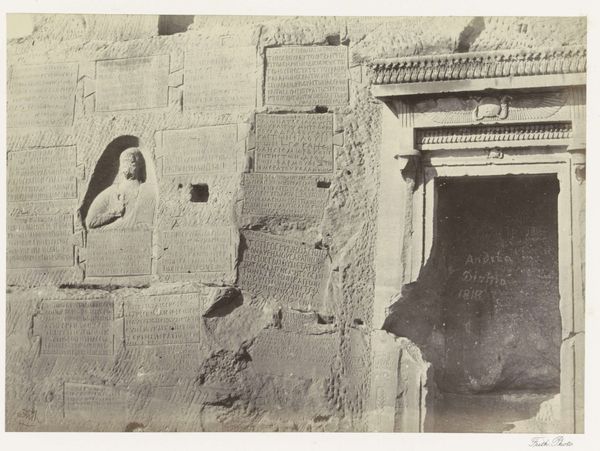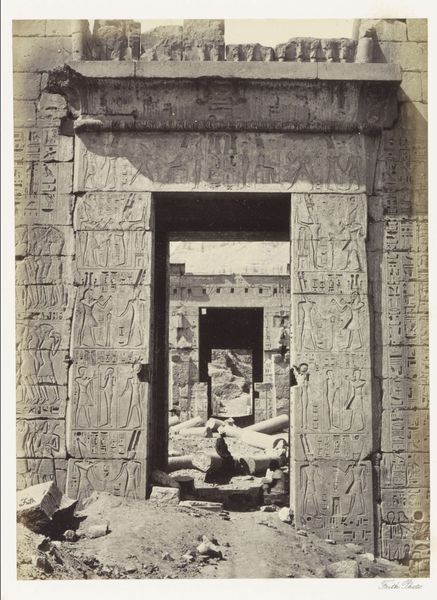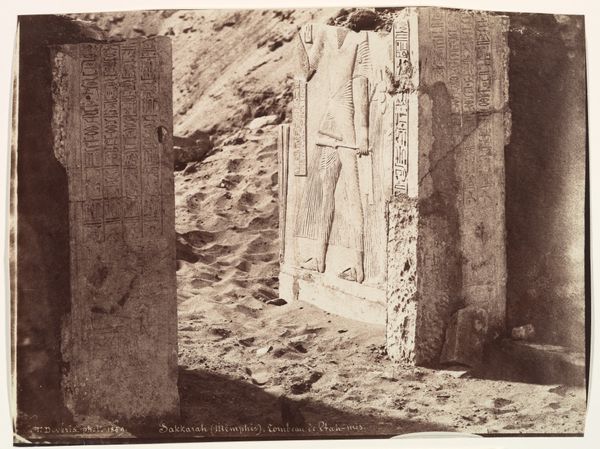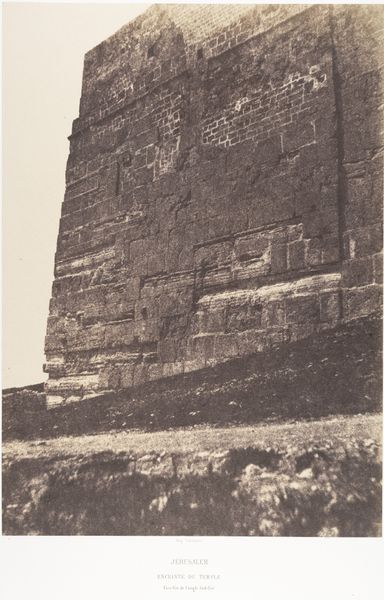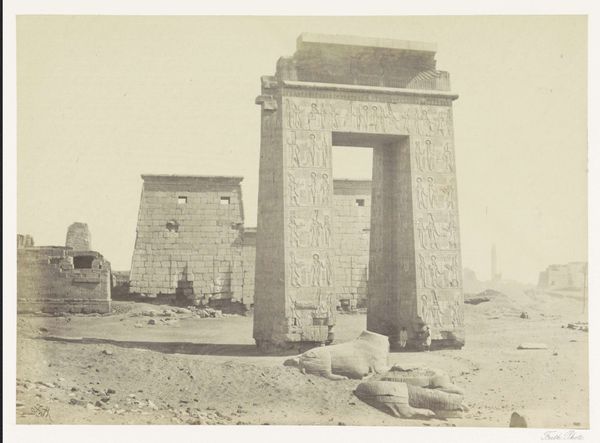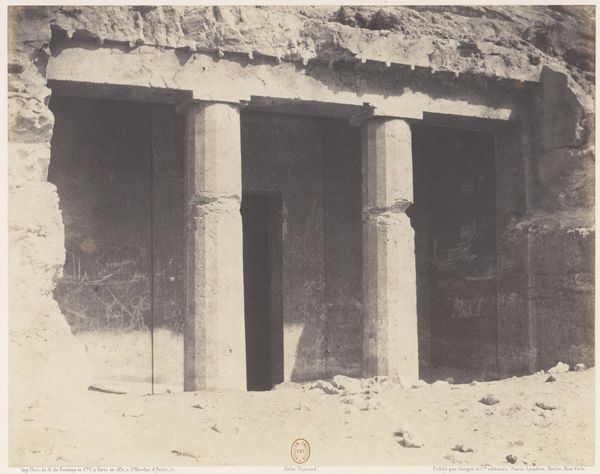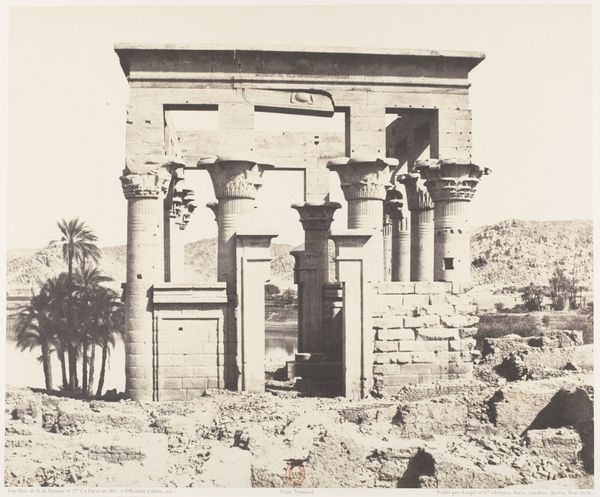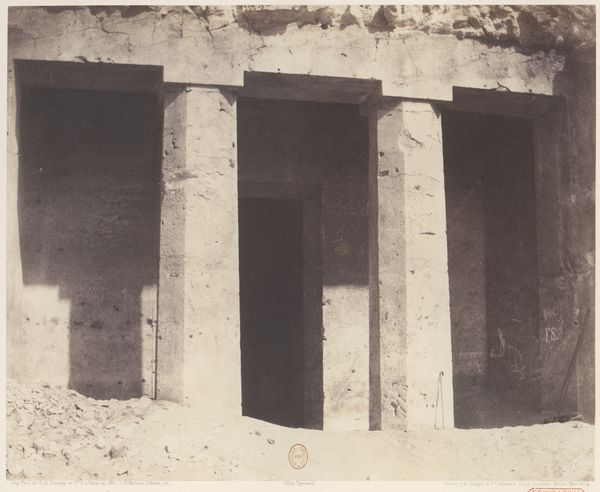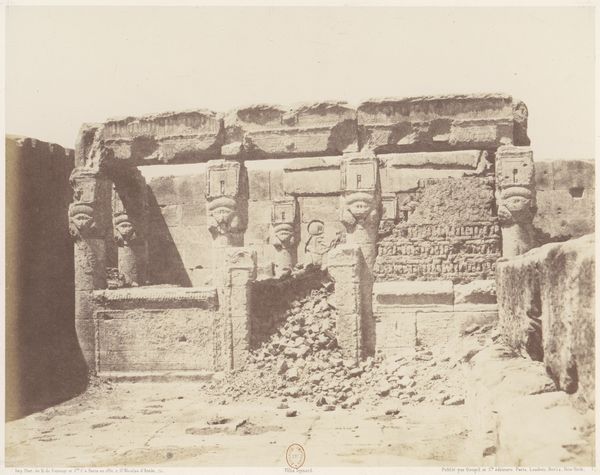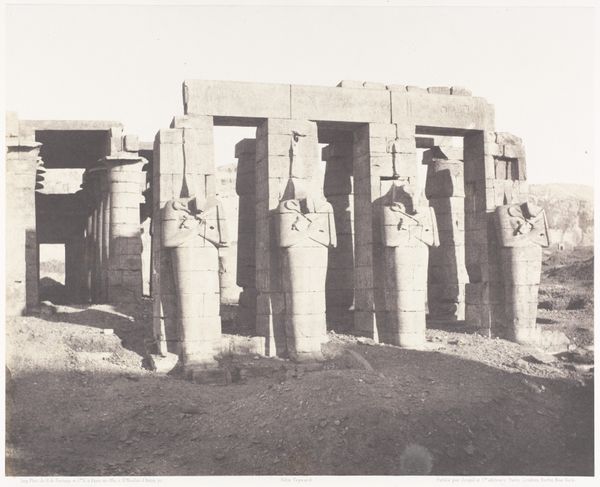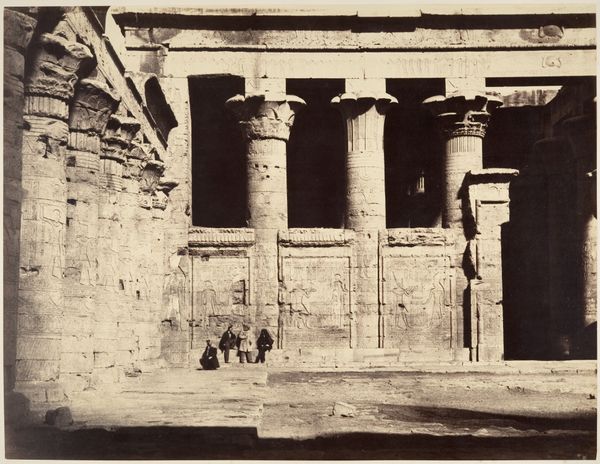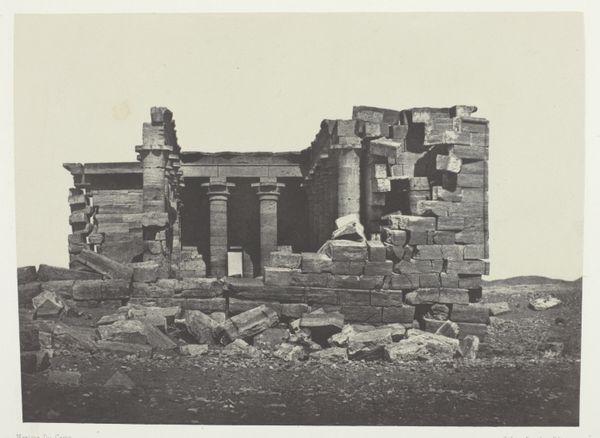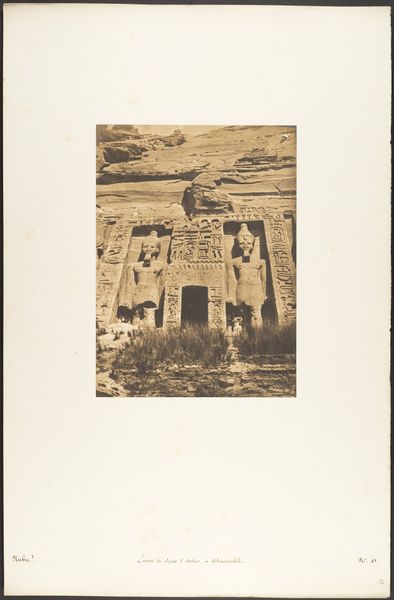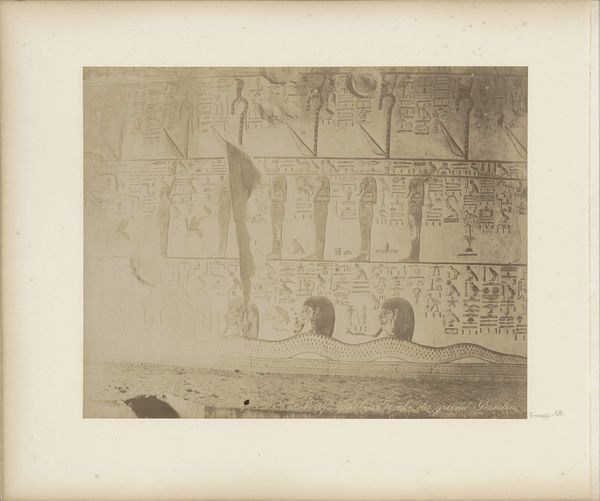
Kardâcy, Sanctuaire, Niches et Inscriptions Taillées dans les Carrières 1851 - 1852
0:00
0:00
daguerreotype, photography, architecture
#
film photography
#
landscape
#
daguerreotype
#
photography
#
ancient-mediterranean
#
arch
#
cityscape
#
film
#
architecture
Dimensions: 23.7 x 30.6 cm. (9 5/16 x 12 1/16 in.)
Copyright: Public Domain
Editor: So, this is Félix Teynard's "Kardâcy, Sanctuaire, Niches et Inscriptions Taillées dans les Carrières," a daguerreotype from around 1851. It's a photographic image of what appears to be an ancient temple facade. The texture of the stone is so prominent. What can you tell me about this work? Curator: It's compelling to consider the material process here. Teynard, using this early photographic technique, documents not only the "high art" carvings, but also emphasizes the very stuff of the quarry—the exposed rock face. The act of extracting and shaping this stone speaks volumes. What kind of labor went into this? How does this method contrast to painting? Editor: That’s an interesting point. I hadn’t thought about the sheer physicality of it all. Compared to a painting, for instance, this image highlights immense human effort. The incisions seem almost violent. Curator: Exactly! And this is not just about ancient labor. Teynard's own labor in creating this image mirrors, in a way, that earlier effort. The photographic process was laborious as well; a careful treatment of materials to produce one image. How were the economic systems intertwined during its production? Editor: True! It’s a recording, yes, but it required skill, resources, and a specific technology of the time. So, both the carving and the photographing reflect the technological and economic circumstances surrounding the work? Curator: Precisely. Think about the consumption of images then, too. This photograph allows viewers far removed from the site to “consume” the image, fueling archaeological interest and, potentially, colonial agendas. It’s a circulation of power encoded within the materiality of this print. Editor: I see, it shifts from the art itself to the labor and technology used in producing this, as well as the effects it had in that period. Thanks so much! I never would've considered those contexts. Curator: It’s all connected. Considering the processes involved in making and viewing helps us decode deeper layers of meaning and social impact.
Comments
No comments
Be the first to comment and join the conversation on the ultimate creative platform.
